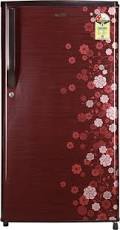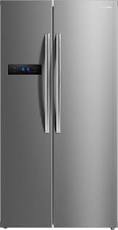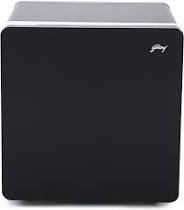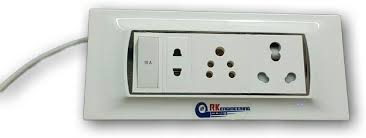You might find a rice cooker in someone’s house or you might not .
You might see a deep fryer or you might not , but something everyone has in their kitchen is a refrigerator. Refrigerators are the go to tools for everything these days .
You have some left over food to store ?
Have some vegetables that you don’t want to be spoiled ?
It’s a hot day and nothing will extinguish your thirst like a bottle of cool water ?
You see , it’s become a part and parcel of our lives . It’s the only thing in your household that runs 24 * 7 . So , when you think about it , one of the most common questions your brain would come up with , would be how many amps does a refrigerator use ?
Or in simple terms , how much would it cost me per month to keep a refrigerator working ?
For these questions , you need to understand a few things .
First of all , there are two types of current . These are :
- Direct current or DC .
- Alternating current or AC .
Most of the electronic appliances that you have in your home require an AC outlet or in non scientific terms , an alternating source of current . But some of these appliances might need direct current for their operation . Devices which run on motors ( like refrigerators which are used in our homes ) run on AC . Check it out to know more about kitchen appliance.
So what does exactly a refrigerator need electricity for ?
Well , it is quite obvious , isn’t it ?
It requires an electric source to maintain the low temperature inside it’s body.
And different refrigerators have different architecture and styles by which they keep their compartments cool .
So here are the different types of fridges :
Top freezer refrigerator :
If you know nothing about refrigerators and are a middle class person , you probably have seen this everywhere you have been . This design has been in the market since the time refrigerators became a useful appliance in everyone’s day to day activity. It is one of the simplest models known to us and is pocket – friendly . It comes in various shapes and sizes .
Side by side refrigerator :
If you want your fridge to open the gateway to your heaven ( Yes , I am talking about your food ) just like big gates open ways to massive mansions , you are looking for a side – by – side refrigerator. But with great styles , comes a small sacrifice . And the sacrifice is the compartment size . You can not store huge blocks of anything . Side-by-Side refrigerators also have the benefit of requiring a small door swing space, making them ideal for kitchens with limited area.
Bottom freezer refrigerators :
Exactly as the name suggests , the freezer is located at the bottom and quite contrary to the common believe , I feel that it is much better than the top freezer refrigerator . It provides a large block of storage space for both the refrigerator and freezer sections, allowing easy accommodation of contents in various shapes and size .
Mini refrigerators :
If you live alone and / or are in the middle of things , you might want to cut down on costs whenever and wherever you can . The mini fridge does not occupy a lot of space and hence would help you store in other essentials and also consumes less energy in the form of electricity . Mini fridges are of two types :
-
- With freezer .
- Without freezer .
Now that you have a fair idea about what different types of refrigerators are , let me now talk about the factors that co – relate to the power consumption by the refrigerator .
The factors are :
Type :
There are two basic types of fridges , Commercial ( ones which are seen in shops ) and Non- Commercial ( ones which we use at home ) On an average , commercial refrigerators use 10 times more electricity than non – commercial ones. The review from this website may help you get an energy-efficient commercial unit.
Size :
The larger the size of the fridge is , the more capacity it has and the more area for it to cool . Hence , with size , electricity consumption increases .
Location :
While it may not seem very important to you , but ventilation is an important factor when it comes to refrigerators . Poor ventilation might lead to extra consumption of energy .
Season :
All refrigerators use more power in summer than in winter as the ambient temperature is higher .
Usage :
If the fridge door is opened frequently or held open, the compressor will need to work harder to keep things cool. Also, an empty fridge may need to work harder than a reasonably-stocked fridge because more ‘cool air’ is replaced with ‘warm air’ each time the door is opened .
Age and condition :
As the refrigerator gets old , it consumes more energy than the new ones . Also , newer models are designed to be more energy efficient than newer ones . The newer models also have settings that help you to manually set the temperature inside the compartment depending on the nature of food stored in it . This helps in optimization of energy consumption so that you do not pay what you don’t have to .
And now , we are done with the factors which co – relate to the power consumption by the refrigerator .
Tip : Always use a selected electric board for any high powered electric appliance rather than a normal 3 – pin connection . This will act as a precautionary measure just in case of a short circuit.
So how much electricity does a refrigerator consume ?
Fridge amps mean the measure of electrical vitality utilized by a refrigerator to cool down the compartment. For most households the amperage goes somewhere in the range of 3 and 5 on account of 120 V. You need a devoted 15 – 20 amp circuit as the beginning amperage is essentially more.
So , 15 – 20 amps is the average quantity of electric current used by the fridge .
It might also depend on the voltage drawn by the refrigerator and the power it requires for it’s functioning . To calculate the amps used ; use the formula – Watts / Volts = Amps per hour . For example, a 60-watt fridge running on a 12-volt power source uses 60 / 12 = 5 amps , but only while the motor runs .
Or for instance any commercial refrigerator, which uses 10 times the energy used by a non commercial one ( 5 amps in this case ) would use around 50 amps. Hence, on an average , it is safe to conclude that 15 amps to 20 amps would be the best estimate.
The most common refrigerator in the United States is the 20-cubic-foot mini refrigerator. In fact, mini fridges are so common that they are often used in offices and dorms. (On a related note, see our post on the best mini refrigerators for dorm rooms.) The average mini refrigerator uses about 185 watts (w) or about 280 watts (w). That is the equivalent of about 0.185 kilowatts (kW) or 0.28 kilowatts (kW). To put that in perspective, a 40-watt light bulb uses about 0.04 kilowatts (kW). So, a mini refrigerator uses about the same amount of power as about





